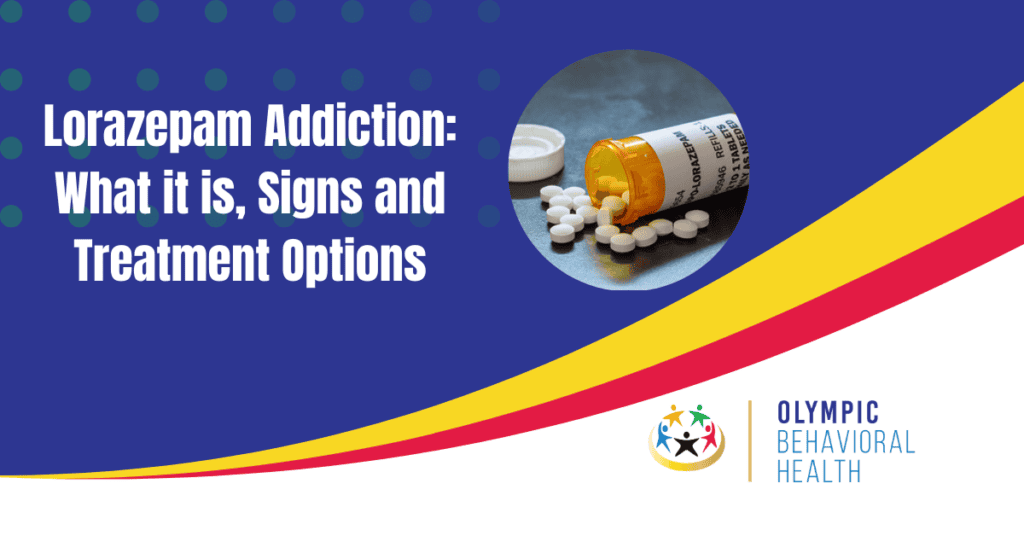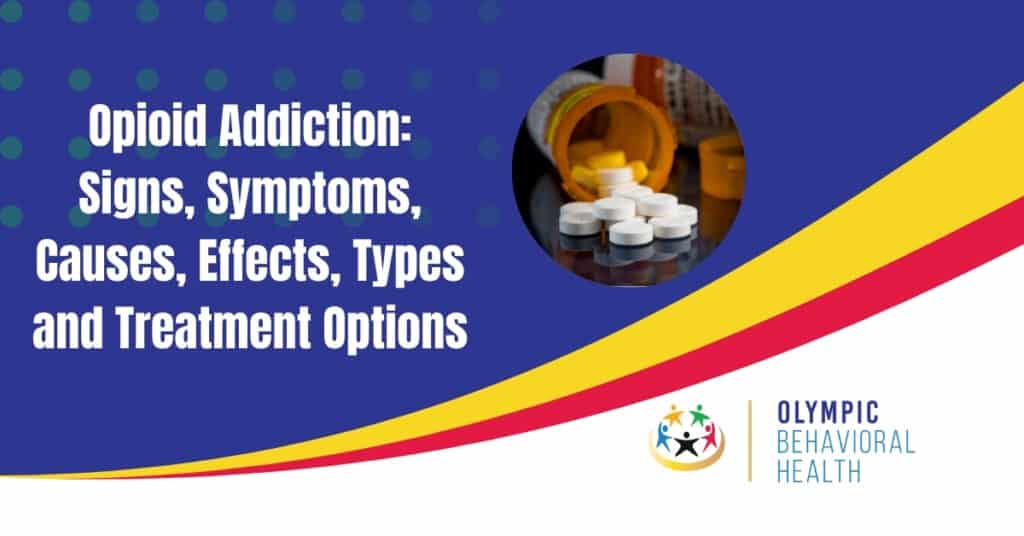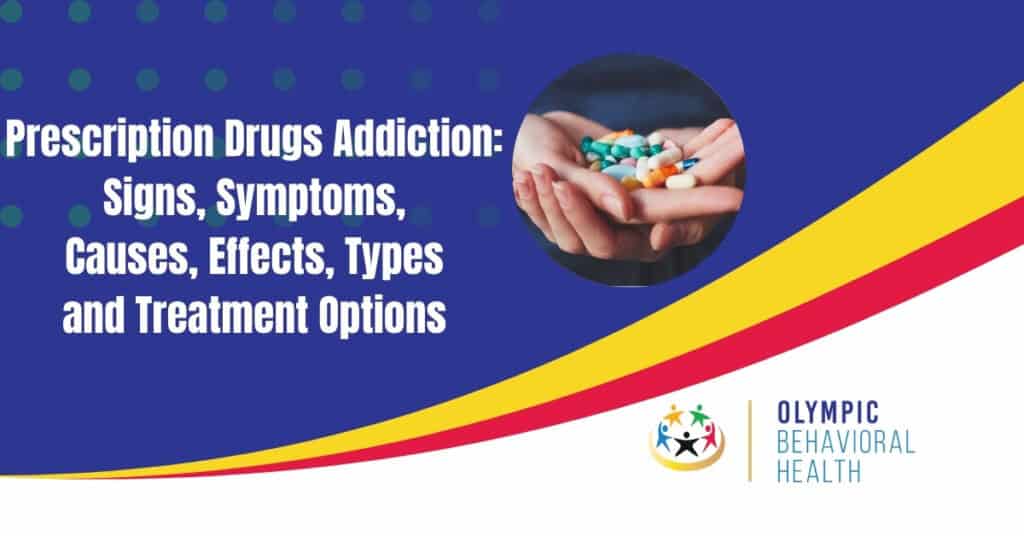Lorazepam addiction, also known as lorazepam use disorder, is a condition characterized by a compulsive and harmful pattern of using the medication lorazepam. This benzodiazepine addiction can lead to various physical, psychological, and social issues. Recognizing the signs of lorazepam addiction and seeking appropriate treatment options are crucial steps towards recovery and wellness.
What Is Lorazepam?
Lorazepam is a benzodiazepine medication commonly used to treat anxiety disorders, insomnia, and seizure disorders. It enhances the effects of the brain neurotransmitter called gamma-aminobutyric acid (GABA), reducing anxiety and promoting relaxation.
It’s important to be aware of lorazepam’s potential for addiction and dependence. Due to its calming and sedating effects, lorazepam can be habit-forming if not used as directed by a healthcare professional. It is recommended to use lorazepam for only a few weeks to avoid dependence.
When taking lorazepam, follow the prescribed dosage and avoid exceeding it. Higher doses or prolonged use can increase the risk of tolerance and dependence. Abruptly stopping lorazepam can cause withdrawal symptoms such as anxiety, insomnia, restlessness, and seizures. To prevent withdrawal symptoms, gradually reduce the dosage under medical supervision.
Lorazepam may cause side effects like drowsiness, confusion, dizziness, and impaired coordination. Avoid activities requiring mental alertness, like operating machinery or driving, until you understand how lorazepam affects you.
Follow your doctor’s instructions and discuss any concerns or questions about lorazepam. Do not increase the dosage without consulting your doctor to avoid dependence and adverse effects. Notify your doctor immediately if you experience any side effects or discomfort. Keep lorazepam in a secure place, out of reach of children or individuals who may misuse it. Consult your doctor to gradually reduce the dosage when discontinuing lorazepam, minimizing the risk of withdrawal symptoms.
Understanding Lorazepam Addiction
Understanding Lorazepam Addiction is important to address the issue and provide appropriate help to those struggling.
– Lorazepam, belonging to the benzodiazepine family, is commonly prescribed for anxiety disorders and insomnia.
– Active Voice: Lorazepam addiction occurs when individuals misuse or abuse the medication, taking higher doses than prescribed or using it without a prescription.
– Unlike other benzodiazepines, lorazepam has a high potential for addiction and dependence.
– Understanding the Signs: Recognizing signs of lorazepam addiction is important for intervention and seeking help promptly. Common signs include strong drug cravings, inability to control or stop usage, and withdrawal symptoms when attempting to quit.
– The Impact: Lorazepam addiction can severely affect relationships, work/school performance, and mental and physical health.
– Engaging in High-Risk Behaviors: Those addicted to lorazepam may doctor shop or obtain the drug illegally to satisfy their cravings.
– The Dangers of Mixing: Combining lorazepam with substances like alcohol and opioids can have life-threatening effects on the central nervous system.
– Detoxification and Treatment: Treating lorazepam addiction often involves detoxification, counseling, and behavioral therapies.
– Support Systems: Building a strong support system is crucial for those recovering from lorazepam addiction, including family, friends, and support groups.
– The Role of Healthcare Providers: Healthcare providers play a crucial role in helping individuals understand the risks of lorazepam addiction and providing appropriate guidance and treatment options.
– Prevention: Education and awareness programs can help prevent lorazepam addiction by providing information about the risks, potential side effects, and safe usage of the medication.
Understanding lorazepam addiction is essential for individuals, healthcare providers, and society as a whole. By addressing this issue proactively, we can prevent the negative consequences associated with lorazepam misuse and provide support and treatment to those in need.
What Are the Signs of Lorazepam Addiction?
Lorazepam addiction can have serious consequences. It is important to be aware of the signs of lorazepam addiction in order to seek help for those who may be struggling. Here are the signs of lorazepam addiction:
1. Increased Tolerance: One of the first signs of lorazepam addiction is the need for higher doses to achieve the desired effect. This can indicate the body’s dependence on the drug.
2. Withdrawal Symptoms: When someone addicted to lorazepam tries to stop or reduce their use, they may experience symptoms such as anxiety, restlessness, insomnia, and irritability. These symptoms can indicate a physical dependence on the drug.
3. Obsession with Obtaining and Using Lorazepam: Individuals with an addiction may become preoccupied with obtaining and using lorazepam. They may spend a significant amount of time planning how to get the drug and using it.
4. Neglecting Responsibilities and Relationships: Lorazepam addiction can lead to neglecting important responsibilities such as work, school, or family obligations. Individuals may also experience strained relationships or conflicts due to their drug use.
5. Changes in Behavior and Mood: Lorazepam addiction can cause noticeable changes in behavior and mood. This can include increased agitation, irritability, mood swings, and a lack of motivation. Individuals may also exhibit secretive behavior or become defensive when questioned about their drug use.
6. Continued Use Despite Negative Consequences: Despite experiencing adverse effects on their physical and mental health, relationships, or other aspects of their life, individuals with lorazepam addiction will continue to use the drug. This is a strong indicator of addiction.
It is important to note that these signs do not guarantee addiction, but they should serve as warning signs to seek professional help. If you or someone you know is showing signs of lorazepam addiction, it is crucial to reach out to a healthcare professional or addiction specialist for support and treatment options. Remember, early intervention can greatly increase the chances of successful recovery.
Who Is at Risk for Lorazepam Addiction?
Who Is at Risk for Lorazepam Addiction?
Certain factors can increase the likelihood of addiction to Lorazepam. Individuals with a history of substance abuse are at a higher risk for Lorazepam addiction. Moreover, individuals with anxiety or depression may be more susceptible to developing an addiction to Lorazepam. Additionally, having a family history of addiction can increase the risk of Lorazepam addiction.
Younger individuals, particularly adolescents and young adults, may be more prone to experimentation and risky behaviors, increasing their risk of Lorazepam addiction. Furthermore, those suffering from chronic pain or insomnia may be prescribed Lorazepam, but long-term use can lead to dependency and addiction. It is worth mentioning that concurrent use of multiple substances, such as combining Lorazepam with alcohol or other drugs, significantly increases the risk of addiction.
It is important to note that while these factors can increase the risk of Lorazepam addiction, they do not guarantee addiction. The interaction between these risk factors and individual circumstances varies for each person.
Watch out for the side effects of Lorazepam, they’ll make you question if life is just a bad trip.
The Side Effects of Lorazepam
Get ready to uncover the dark side of lorazepam – its side effects. Brace yourself as we dive into the physical and psychological impacts of this medication. From potential bodily changes to the impact on our mental state, we’ll explore the consequences that can result from the use of lorazepam. So, hold on tight and prepare to discover the hidden effects that lurk beneath the surface.
Physical Side Effects of Lorazepam
Lorazepam can have significant physical side effects that vary depending on the individual and dosage.
- Drowsiness: One common physical side effect of Lorazepam is drowsiness, which can make you feel tired and impair daily tasks.
- Dizziness: Lorazepam can cause dizziness, leading to a feeling of unsteadiness or lightheadedness, increasing the risk of falls.
- Muscle weakness: Some individuals may experience muscle weakness while taking Lorazepam, making physical activities difficult.
- Slurred speech: Lorazepam can affect speech patterns, causing slurred or slow speech that may impact communication.
- Balance issues: Lorazepam can disrupt the balance system, resulting in poor coordination and a higher fall risk.
It is important to note that these physical side effects are more likely with higher doses or prolonged use of Lorazepam. Follow the prescribed dosage and consult a healthcare professional if you experience concerning side effects.
Fact: A study published in the Journal of Clinical Psychopharmacology found that approximately 17% of individuals taking Lorazepam reported drowsiness as a side effect.
Taking lorazepam may make you laugh at your own jokes, but it won’t be long before your sense of humor is the only thing laughing.
Psychological Side Effects of Lorazepam
Lorazepam, a benzodiazepine medication, can have Psychological Side Effects of Lorazepam. It’s important to be aware of these Psychological Side Effects of Lorazepam when considering its use. Here are some key Psychological Side Effects of Lorazepam that may occur:
-
Sedation: Lorazepam can cause drowsiness and impair cognitive functioning.
-
Confusion: Some individuals may experience difficulty concentrating while taking lorazepam.
-
Memory problems: Lorazepam can affect memory, leading to forgetfulness or difficulty recalling recent events.
-
Emotional blunting: Lorazepam can dampen emotions, reducing the intensity of both positive and negative emotions.
-
Mood changes: Some individuals may experience changes in mood, including feelings of depression, anxiety, irritability, or euphoria.
-
Paradoxical reactions: In rare cases, lorazepam can cause increased agitation, restlessness, aggression, or abnormal behaviors. Medical attention should be sought immediately if this occurs.
-
Addiction and dependence: Prolonged use of lorazepam can lead to psychological dependence and Addiction of Lorazepam, resulting in cravings and difficulty stopping its use.
It’s important to note that the severity and frequency of these Psychological Side Effects of Lorazepam may vary among individuals. Consulting with a healthcare provider is recommended for evaluation and guidance when using lorazepam to minimize the risk of experiencing these effects. Psychological Side Effects of Lorazepam should be monitored closely, and medical intervention should be sought if they become bothersome or interfere with daily functioning.
The Dangers of Lorazepam Addiction
Lorazepam addiction is no small matter, and its dangers are not to be taken lightly. In this section, we will uncover the grim reality surrounding lorazepam addiction. From the devastating health risks it poses, to the toll it takes on cognitive functioning and relationships, this exploration will shed light on the dark side of lorazepam misuse. Brace yourself for eye-opening insights into the real-life consequences of this addiction.
1. Health Risks
The health risks of lorazepam addiction are significant. Here are some dangers and potential health consequences of this addiction:
-
Lorazepam addiction can pose serious risks to one’s health. It can suppress the respiratory system, making it difficult to breathe and potentially leading to respiratory failure. Combining lorazepam with substances like alcohol or opioids can escalate these risks, making it particularly dangerous.
-
Another concern is the development of tolerance to lorazepam. This can increase the chances of accidental overdose, which can result in coma, organ failure, or even death.
-
Abruptly stopping the use of lorazepam can have severe withdrawal symptoms. These can include anxiety, insomnia, tremors, seizures, and delirium. It is crucial to undergo medically supervised detoxification to manage these symptoms safely.
-
Long-term usage of lorazepam can have detrimental effects on cognitive function, memory, concentration, and attention. These impairments can significantly impact daily life and overall well-being.
-
Lorazepam addiction is also known to exacerbate or lead to mental health disorders such as depression, anxiety disorders, and panic attacks. Treating lorazepam addiction is essential to address these co-occurring conditions.
-
Impairment in judgment, coordination, and motor skills is a significant risk associated with lorazepam use. This increases the likelihood of accidents and injuries, further compromising one’s health.
-
Prolonged and continued use of lorazepam can lead to tolerance, addiction, and dependence. It is crucial to be aware of these risks and seek timely intervention.
Recognizing the health risks of lorazepam addiction is of utmost importance. Seeking appropriate treatment and support through medical detoxification, behavioral therapies, and support groups can help overcome addiction and minimize the potential health consequences.
2. Impaired Cognitive Functioning
Impaired cognitive functioning is a significant consequence of lorazepam addiction. This drug profoundly affects the central nervous system, leading to severe cognitive impairments. Individuals with lorazepam addiction may experience various cognitive issues, including poor concentration, memory problems, slowed thinking, confusion, impaired judgment, decreased cognitive flexibility, reduced problem-solving skills, and overall decline in cognitive performance. These impairments can persist even after discontinuing lorazepam use. Seeking treatment, such as medical detoxification and behavioral therapies, is crucial for individuals to recover from lorazepam addiction and enhance their cognitive functioning. Furthermore, increasing education and awareness about the risks and side effects of lorazepam can play a vital role in preventing addiction and its associated cognitive impairments.
Who needs friends when you have lorazepam? It’s the relationship destroyer that fits in your pocket!
3. Negative Impact on Relationships and Social Life
The detrimental effects of lorazepam addiction on relationships and social life are substantial. It puts a strain on personal relationships, hampers social interactions, and impedes the ability to maintain a healthy social life. Here are specific ways in which lorazepam addiction can have a negative impact:
1. Strained relationships: Addiction to lorazepam can cause individuals to prioritize drug use above their relationships, resulting in conflicts, trust issues, and strained communication with loved ones.
2. Isolation: People addicted to lorazepam may withdraw from social activities and isolate themselves from friends and family. This isolation exacerbates the addiction and contributes to feelings of loneliness and despair.
3. Decreased productivity and functionality: Lorazepam addiction impairs cognitive functioning, including memory, concentration, and decision-making abilities. This leads to difficulties at work or school, resulting in decreased productivity and overall performance.
4. Financial problems: Addiction to lorazepam leads to significant financial strain. Individuals may spend excessive amounts of money on acquiring the drug, neglecting their financial responsibilities, and creating financial instability.
5. Legal issues: Lorazepam abuse can result in legal problems, such as driving under the influence or illegal acquisition of the drug, with serious consequences on personal and professional life.
6. Emotional and psychological impact: Lorazepam addiction worsens preexisting mental health issues or gives rise to new ones, resulting in increased emotional instability, mood swings, and heightened anxiety or depression.
7. Stigma and social judgment: Society stigmatizes addiction, and individuals grappling with lorazepam addiction may face social judgment and discrimination. This further isolates them and makes it challenging to seek help and support.
Addressing lorazepam addiction promptly is crucial in mitigating these adverse effects on relationships and social life. Seeking professional help, participating in therapy, and establishing a robust support network significantly enhance the quality of life and foster healthier relationships. Recovery is possible, and support is available for individuals struggling with lorazepam addiction.
Treating Lorazepam addiction: because life is already hard enough without a sedative trying to steal the spotlight.
How to Treat Lorazepam Addiction
Struggling with lorazepam addiction? Discover effective ways to address it. From medical detoxification to behavioral therapies and support groups, we’ll explore the various approaches to treating lorazepam addiction. Learn how these methods have helped individuals regain control of their lives and overcome the side effects of lorazepam misuse. Let’s embark on a journey towards recovery together.
1. Medical Detoxification
Medical Detoxification is a vital component in the treatment of lorazepam addiction. It is imperative that healthcare professionals oversee the process and closely monitor vital signs. By gradually reducing the dosage of lorazepam, withdrawal symptoms can be minimized, ensuring a safe and comfortable detoxification experience. Additionally, individualized treatment plans must take into account the severity of the addiction, overall health condition, and any co-occurring mental health disorders. Proper management of lorazepam withdrawal, with the use of medication for comfort and stabilization, is crucial. Emotional support and counseling play a pivotal role in addressing the psychological aspect of detoxification, as individuals face numerous challenges throughout the process. Following medical detoxification, individuals are encouraged to continue their recovery journey through behavioral therapies and support groups. Medical Detoxification is an essential step towards overcoming physical dependence and achieving a healthier, addiction-free life.
2. Behavioral Therapies
Behavioral therapies, such as Cognitive Behavioral Therapy (CBT), Motivational Enhancement Therapy (MET), Contingency Management, Family Therapy, and Support Groups, are crucial in treating lorazepam addiction. These therapies focus on the psychological factors that contribute to addiction and help individuals develop healthier coping mechanisms and behaviors.
CBT, a widely used therapy for addiction treatment, aims to identify and modify negative thought patterns and behaviors associated with lorazepam addiction. It helps individuals manage cravings, cope with triggers, and prevent relapse.
MET, a goal-oriented therapy, encourages individuals to clarify their motivations for change and enhance their commitment to recovery. It assists individuals in overcoming ambivalence about quitting lorazepam use and taking proactive steps towards recovery.
Contingency Management utilizes positive reinforcement to encourage abstinence from lorazepam use. This therapy offers rewards or incentives for meeting treatment goals, such as clean drug screens or therapy session attendance. It reinforces positive behaviors and motivates individuals to continue their recovery journey.
Family Therapy involves the participation of family members in the treatment process. It focuses on improving communication, resolving conflicts, and providing support to the individual seeking recovery. Family therapy creates a supportive environment that promotes long-term sobriety.
Support Groups, such as Narcotics Anonymous (NA) or SMART Recovery, provide individuals with a platform to share experiences, receive encouragement, and learn from others who have faced similar challenges. These groups offer a sense of community and ongoing recovery support.
Incorporating behavioral therapies into the lorazepam addiction treatment plan can significantly increase the chances of successful recovery. These therapies address the psychological aspects of addiction and equip individuals with the skills and tools needed for long-term sobriety. Working with qualified professionals to customize the treatment approach based on individual needs is essential for optimal outcomes.
Support groups and aftercare programs: because recovering from a lorazepam addiction is like trying to find your car keys in a swimming pool.
3. Support Groups and Aftercare Programs
Support groups and aftercare programs play a vital role in the treatment of lorazepam addiction. These programs provide ongoing support and valuable resources to individuals who are in recovery.
- Peer support: Support groups create a space where individuals can connect with peers who have faced similar struggles. These groups offer a safe and non-judgmental environment for sharing experiences, listening, and providing encouragement.
- Emotional support: Aftercare programs offer a variety of support services, including individual therapy or counseling, to address underlying emotional issues associated with addiction. These programs allow individuals to delve into their emotions, acquire coping mechanisms, and develop strategies to prevent relapse.
- Education and information: Support groups and aftercare programs frequently organize educational sessions on lorazepam addiction, its effects, and strategies for recovery. These sessions may cover topics such as relapse prevention, self-care, and fostering healthy relationships.
- Skill-building: Support groups and aftercare programs may host workshops or activities aimed at enhancing coping skills and cultivating healthier habits. These activities might involve stress management techniques, mindfulness exercises, and strategies for setting and achieving goals.
- Accountability: Being part of a support group or aftercare program fosters a sense of accountability. Group members support one another and encourage positive choices, increasing the chances of successful long-term recovery.
It should be noted that support groups and aftercare programs should complement other treatment approaches, such as medical detoxification and behavioral therapies, to ensure a comprehensive approach to lorazepam addiction recovery.
Preventing Lorazepam addiction: It’s all about responsible use, proper prescription, and avoiding a chilling dependency on those anxiety-zapping little pills.
Preventing Lorazepam Addiction
Preventing Lorazepam addiction is crucial in ensuring the well-being and safety of individuals. In this section, we will dive into effective strategies that can help safeguard against the risks of Lorazepam addiction. From responsible use and proper prescription practices to the importance of education and awareness, we will explore the key elements that can play a significant role in preventing addiction. By understanding these measures, we can make informed choices and promote a healthier and safer environment for all.
1. Responsible Use and Proper Prescription
Responsible Use and Proper Prescription
When it comes to lorazepam, responsible use and proper prescription are crucial factors to consider:
- Consult with a healthcare professional: Prior to initiating lorazepam treatment, it is essential to consult with a healthcare professional to evaluate your medical history and determine if it is the appropriate choice for you.
- Follow the prescribed dosage: Always adhere to the dosage instructions provided by your healthcare professional. It is important not to exceed the recommended dosage as this can heighten the risk of side effects and addiction.
- Avoid prolonged use: Lorazepam is typically prescribed for short-term use due to its potential for addiction. It should only be used for the prescribed period and not beyond that without medical guidance.
- Avoid combining with alcohol or other substances: Combining lorazepam with alcohol or other substances can lead to dangerous interactions and intensify sedative effects. It is crucial to inform your healthcare professional about any other medications or substances you are taking.
- Regularly evaluate effectiveness: It is essential to periodically assess the effectiveness of lorazepam. If the desired results are not experienced or if the side effects outweigh the benefits, consult with your healthcare professional to explore alternative treatment options.
True story: Sarah, a 45-year-old woman, received a responsible use and proper prescription of lorazepam for her anxiety. She followed the guidelines provided by her healthcare professional. She took the medication as directed, abstained from alcohol and other substances, and regularly assessed its effectiveness. After a few weeks, Sarah observed a significant improvement in her anxiety symptoms. She maintained close collaboration with her healthcare professional to ensure she was on the right track and made necessary adjustments to her treatment plan as required. Thanks to her responsible use and proper prescription of lorazepam, Sarah effectively managed her anxiety and enhanced her quality of life.
2. Education and Awareness
Education and awareness are vital in preventing lorazepam addiction. By providing accurate information about the risks of lorazepam use, individuals can make informed decisions about their health and seek help when needed.
The table below highlights key aspects of education and awareness regarding lorazepam addiction:
…
1. Importance of Education: Education raises awareness of the risks, signs, and dangers of lorazepam use.
2. Providing Information: Informing the public, healthcare professionals, and users about lorazepam’s addictive potential and responsible use can prevent addiction and promotes education and awareness.
3. Risk Factors: Awareness about factors that increase the risk of lorazepam addiction helps individuals make informed decisions and underscores the importance of education and awareness.
4. Promoting Alternative Treatments: Education focuses on safer options for anxiety and insomnia treatment, reducing the risk of addiction and emphasizing the role of education and awareness.
5. Prevention Programs: Implementing prevention programs in communities, schools, and healthcare settings equips individuals with knowledge and skills and highlights the significance of education and awareness.
6. Treatment Resources: Educating individuals about available treatments like medical detoxification, behavioral therapies, and support groups encourages seeking help and further highlights the importance of education and awareness.
By prioritizing education and awareness, we can empower individuals to make informed choices and reduce lorazepam addiction. Healthcare professionals, communities, and individuals must collaborate to ensure accurate information is accessible and promote education and awareness.
Education and awareness are ongoing processes, and staying informed is key to promoting a healthier and safer society.
Can other medications also cause Addiction?
Yes, let’s have a look at some:
Can Clonazepam cause Addiction?
Yes, like other benzodiazepines, clonazepam can cause addiction. It is important to use this medication as prescribed by a doctor and to be aware of the signs of addiction, such as increasing the dosage without consulting a doctor or feeling withdrawal symptoms when not taking the medication. If you or a loved one is struggling with addiction to clonazepam or any other substance, seeking professional help is crucial.
Treatment options may include therapy, support groups, and in-patient or out-patient rehabilitation programs. It is important to seek help and support to overcome addiction and maintain healthy habits for long-term recovery. For more information on clonazepam addiction, check out our article.
Can Temazepam cause Addiction?
Yes, Temazepam falls under the category of benzodiazepine drugs, similar to Lorazepam, which have a high potential for addiction. When taken for long periods of time or in high doses, Temazepam can lead to physical and psychological dependence. Signs of Temazepam addiction include needing higher doses to achieve the desired effects, experiencing withdrawal symptoms when attempting to stop usage, and continuing to use despite negative consequences.
Treatment options for Temazepam addiction may include therapy, support groups, and medication-assisted treatment. It is important to seek professional help if you or a loved one may be struggling with Temazepam addiction. Read more about temazepam addiction here.
Get help for your Benzo Addiction
Finding help for your Benzo addiction can be challenging, but taking the first step is crucial. Our facility is here to support you through this difficult journey. By reaching out and seeking help, you are opening the door to a healthier, happier life. Let us guide you towards recovery.

Share This Post



